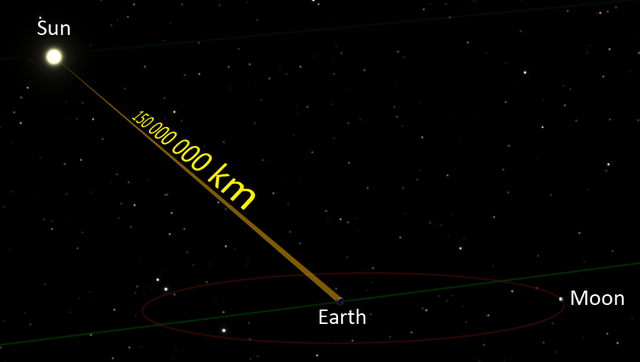Speed of light: Difference between revisions - Wikipedia
 Article Images
Article Images
Content deleted Content added
Hertz1888 57,227 edits m |
|||
Line 49: }} The '''speed of light''' in [[vacuum]], commonly denoted {{math|'''''c'''''}}, is a universal [[physical constant]] important in many areas of [[physics]]. Its value is exactly '''299,792,458 [[metre per second|metres per second]]''', a figure that is exact because the length of the metre is defined from this constant and the [[Second#International_second|international standard for time]], respectively.<ref name="penrose">{{Cite book| last=Penrose |first=R | year=2004 | title=[[The Road to Reality: A Complete Guide to the Laws of the Universe]] | pages=410–1 | publisher=[[Vintage Books]] | isbn=978-0-679-77631-4 | quote=... the most accurate standard for the metre is conveniently ''defined'' so that there are exactly 299,792,458 of them to the distance travelled by light in a standard second, giving a value for the metre that very accurately matches the now inadequately precise standard metre rule in Paris. }}</ref> This is approximately 186,282.4 [[mile]]s per second, or about 671 million [[miles per hour]]. According to [[special relativity]], {{math|''c''}} is the maximum speed at which all energy, matter, and [[physical information|information]] in the [[universe]] can travel. It is the speed at which all [[massless particle]]s and associated [[field (physics)|fields]] (including [[electromagnetic radiation]] such as [[light]]) travel in vacuum. It is also the [[speed of gravity]] (i.e. of [[gravitational wave]]s) predicted by current theories. Such particles and waves travel at {{math|''c''}} regardless of the motion of the source or the [[inertial frame of reference]] of the observer. In the [[theory of relativity]], {{math|''c''}} interrelates [[spacetime|space and time]], and also appears in the famous equation of [[mass–energy equivalence]] {{math|''E''}} = {{math|''mc''<sup>2</sup>}}.<ref name=LeClerq>{{Cite book| last=Uzan |first=J-P |last2=Leclercq |first2=B | year=2008 | title=The Natural Laws of the Universe: Understanding Fundamental Constants | url=http://books.google.com/?id=dSAWX8TNpScC&pg=PA43 | pages=43–4 | publisher=[[Springer (publisher)|Springer]] | isbn=0-387-73454-6 }}</ref> The speed at which light propagates through [[transparent material]]s, such as glass or air, is less than {{math|''c''}}. The ratio between {{math|''c''}} and the speed {{math|''v''}} at which light travels in a material is called the [[refractive index]] {{math|''n''}} of the material ({{math|''n''}} = {{math|''c''}} / {{math|''v''}}). For example, for [[visible light]] the refractive index of glass is typically around 1.5, meaning that light in glass travels at {{nowrap|{{math|''c''}} / 1.5 ≈ {{val|200000|u=km/s}}}}; the [[refractive index of air]] for visible light is 1.000293, so the speed of light in air is {{val|299705|u=km/s}} or about {{val|88|u=km/s}} slower than {{math|''c''}}. | |||